Tropical Ecology trip to delve in the Amazon, Brazil, 2018. Part 1.
- Natasha Woest
- Jan 4, 2019
- 8 min read
Updated: Jan 14, 2019
It all started with applying for a module at university, Tropical Ecology.
Upon a successful application, Manaus, Brazil was the destination: One week in the Amazon rainforest followed by one week on the rivers, Amazon and Negro.
*All trips and excursions were organised and paid for by the University.

The biggest tip I could give anyone wishing to travel to Brazil, and Sao Paulo is not your final destination and just your transfer terminal...PLAN A LONG TRANSFER TIME! The airport is huge and most times, you have to check out your luggage and check it back in and 2hrs is just not enough. We rushed to our gate, only for it to be 45min late to open! Grr!!! Also, don't leave your passport in the toilets whilst waiting for your luggage as I unknowingly did...oops! Heard my name over the tannoy and luckily it was handed in by another traveller...phew!
It all started in Manaus, a town on the Rio Negro (Black water) that has great buildings from the colonial times when Portugal was in Brazil. The Opera theatre is a must to see although, I never went to a show but it is very pretty from the outside (big pink building in the photos below). There are great markets to buy souvenirs as well as two fish markets to browse and see the unusual fish for sale. The town is small and not much to see and do but it's a great hub to have a taste of the rainforest and see the meeting of the rivers. On a Sunday there is a street market just round the corner of the Opera House on Av. Eduardo Ribeiro. It's a great place to buy anything from souvenirs to fake Ray Bans. The big interesting market is a 5minute walk away, along the river where you find a large diversity of aquatic species, fruit and vegetables along with souvenirs too.
Accommodation: Go Inn Hotel - Most of us stayed here and it was reasonably priced, clean, great buffet breakfast included, 24hr reception and good sized rooms.
Local Hostel Manaus - Others stayed here and it looked quirky, laid back and a great open social space. I never saw the rooms but heard that they were decent. It's a bit hard to find as it's down a small side street and has no signage, just huge graffiti on the gates and walls. Private rooms and dorms available.
Both are in a great, central location close to everything you need see in Manaus with just a walk away.

First stop was the National Institute of Amazonian Research (Instituto Nacional de Pesquisas da Amazônia). Here we met Mario Cohn-Haft, an ornithologist and very interesting man. He gave us a tour, together with Jonathan Reddy of the bird, vertebrate, fish and herpetology collections. All specimens collected from the Amazon and boy were there thousands! There are guided paths and enclosures for rescued manatees and giant otters.
We learnt species identification skills, how museums preserve specimens and tag them in the collections. Tags include information such as:
FRONT
Species Latin name
Sex
Co-ordinates and location found
Date
Museum code/log/catalogue number
Name of collector, name of taxidermist
BACK A brief description and relevant information.
DNA is collected, calls, stomach contents, parasites, tumours, fungus swabs and anything else that could be an interest of study.


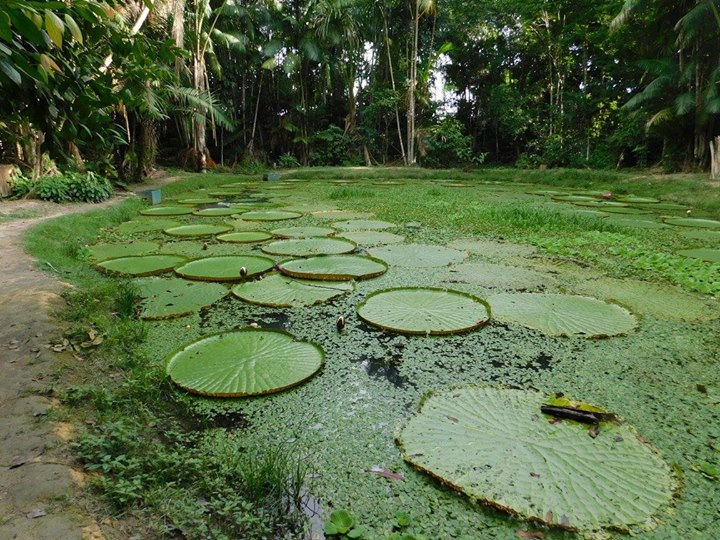
Next stop: Museu da Amazonia (MUSA) - One of the many cities natural parks and part of a research lab offers nearly 250 acres of nature near the centre of Manaus. This was my first step ever into a tropical rainforest. Here, we had a tour guide but you can follow the clearly marked trails and go self guided around the rainforest. There are different and scattered educational spots where you can learn about anything from Amazonian tribes to the flora and fauna diversity of the area. You can see giant lily pads, a variety of snakes in vivarians, large fish tanks beautiful flora around you and finally, head to the top of the viewing tower 60m high, towering above the forest canopy. The views were amazing! Do it and conquer that fear of heights.
Both MUSA and INPA are based on the edge of Reserva Duke, a 100km2 area of protected forest.
Onto the exciting bit...THE RAINFOREST...
Second biggest tip...get fit for this kind of adventure!
Week 1
We were staying at the research institute of Reserva Duke - Jardim Botânico Adolpho Ducke, known as a 'garden' but it's the worlds largest urban rainforest. Here we had the research station to ourselves. There were rooms with beds but we opted for sleeping in hammocks in the wooden cabins.
This was my first time being immersed and staying in the Amazon, or even a rainforest infact. Listening to the crickets, frogs and other insects when going to sleep and waking up to the same sounds, with the addition of howler monkey bellows in the distance.
We learnt from Bill, a resident researcher who guided us and spoke about all ecologies and species we will encounter in the forest. We followed guided paths and walked for hours until we came to a stream for a refreshing swim. The heat and humidity is sure one thing to get used to. It's so hot and sweaty so I'd recommend wearing baggy tops allow air circulation.
My knowledge felt dwarfed in this environment and certainly a feeling of being overwhelmed. I had never thought I'd ever be here in the rainforest and I most certainly have a lot to learn. My eyes were opened to this new biome to me. A potential study area with so much yet to be discovered. The height of the trees, the diameter of some of their trunks, the thick canopy, the differences in the understory, the pioneer species in the tree fall gaps. Processes happening all around me and you just need to stop, look around and see differences, relationships and the busyness of the forest at work. Spiders building nests, termites building mounds, ants following scent trails, the distant calls of primates, birds chattering and chirping and the sound of a branches falling. The smells of freshness, the feel of different textures, the different sizes of leaves...let your senses go wild!
It rained most of the time and with the humidity, clothes drying seems impossible.
We learnt about tree transects to study the abundance of a selected species of tree that we called the groovy tree AKA - The black manwood (Minquartia guianensis Aubl.). We worked in small groups, collected various bits of data on the trees: distances from marker points on the grid system to perpendicular distances from the paths to their diameter at breast height (DBH). Although this was to learn a skill, it was a time to walk through the forest and appreciate your surroundings. Our lecturer, Jean Boubli was teaching us along the way and a good little tour guide despite the fact that we got lost. We found ourselves in swamps and having to climb steep slopes but this just added to the excitement and adventure. One thing I was amazed about was, some of the largest trees had the smallest leaves. Later learnt that this was to maximise the sunlight and water absorption rates. Everything has a purpose.

Leaf cutter ants and aztec ants were out. The odd bird seen and a large Harpy eagle nest sitting high up in a tree, one of three nesting couples in the area. The cicadas out in full force, day and night. Some patches of forest having a louder congregation of singing cicadas that deafen you than others.
The thing that I never thought of was, not seeing an abundance of species. I was expecting to be overwhelmed by bird and mammal life and I couldn't be more wrong! Wildlife documentaries don't depict the struggle of seeing an abundance of life. You have to spend many hours in silence and be still to be lucky. Sadly, time wasn't on our side and being in bigger groups makes it harder.
Next, to learn about invertebrates by using pitfall traps. Specific food or chemicals can be used to attract certain species of inverts. Beetles are attracted to tuna or formaldehyde, butterflies, fruit. We used soapy water at the base of our traps to minimise being overwhelmed by hundreds of critters. Traps were placed 1m apart with a few leaves loosely placed over them to prevent a washout by the rains. Specimens were collected in the morning and then again in the early evening. This allowed us to compare the abundance and diversity of insects at night compared to the daytime. We had dichotomous keys and analysed the specimens in the lab, narrowing them down to a genus level. Whilst out collecting our catch in the traps, we got caught in torrential rain. Large tree branches were falling and, one landed directly behind me causing me to leap out of my skin. It can be super dangerous in the rainforest when it rains so be alert and careful!

Birds were the focus on the third day for our little group. We had to be up at 5.15am to set off at 5.45am. Set the mist nets up, opening them and waiting. 13 nets (9m long x 2m high with 4 shelves - sections) were set up along a 250m stretch along a grid line, with 10m gap between each net. Every hour we would check the nets which would take up to 30min each check. On our watch, we caught a hummingbird, wood creepers and ant birds. Data recorded would be:
Bird weight
Net number
Shelf number
Time
Beak length, wing length, tarsus length, tail length from the gland to the longest tail feather.
Whilst waiting, we would walk around looking for other birds: macaws and woodpeckers and even drank from a liana - learning survival skills...haha.
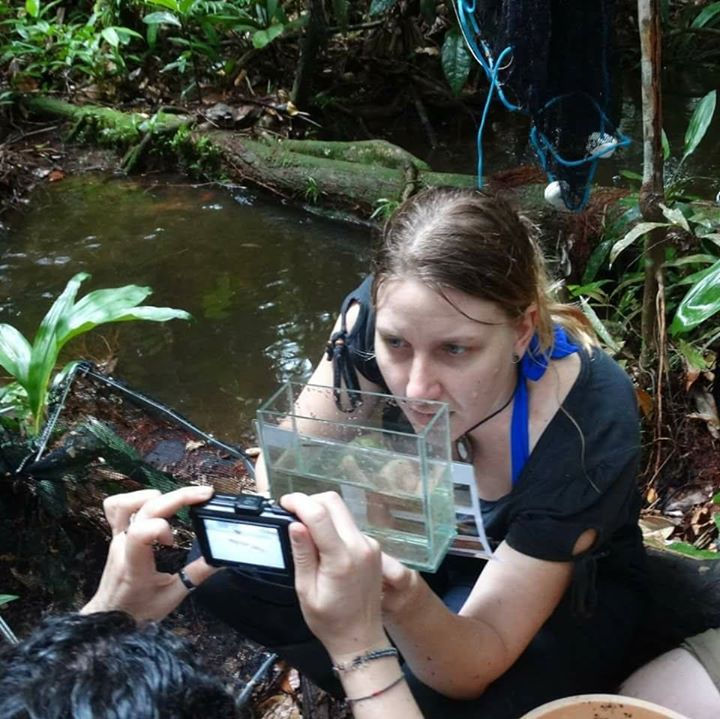
Final skills day was on aquatic species, to look at the heterogeneity of the stream. We would start 10m upstream from a path to be as far away as possible from any human interference. Set up a net across the river down stream and one up stream, 50m apart with another net at 16m. Stream profiles were recorded:
GPS
Environmental parameters
Width and substrate
Flow rate
Temperature and pH
Light - canopy cover
We used smaller nets to scoop up specimens in the first section: collecting fish and crustaceans. Once we had exhausted all possibilities, we then detached the net down stream and scooped it up towards the 16m net. Collected the specimens and placed them in buckets and then repeated the process on the next section.
Later, we identified the specimens, fish to a species level and shrimp to a genus level (macrobrachium and palaemon), documented the finds and then released them.
Everyday there is something new to learn and new to see. Night walks are abundant with frogs, those so tiny that you have to be so quick at spotting them. Scorpions, tarantulas, insects and the odd boa constrictor can be seen too. Always head on a night walk and broaden your sighting possibilities. It should not be missed!
These activities aren't designed, expecting us to know everything! They are for us to learn techniques and skills that can be applied to other areas and research. Those that help up think and decipher data, plan experiments, think about the smallest details to provide effective results. No ways are we able to know every animal and vegetation. One takes many years to learn such and become an expert so never feel inadequate. Learn the skill, the technique and build on the knowledge around you. If this is where you want to work and specialise, the rest will come. Four days is impossible to know everything across all four activities we conducted but it was a great snippet to what could be the start of your future.



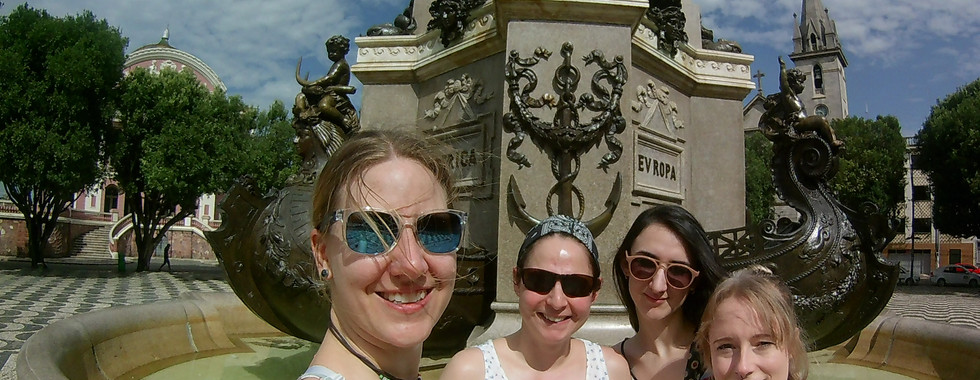





























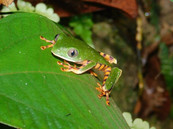



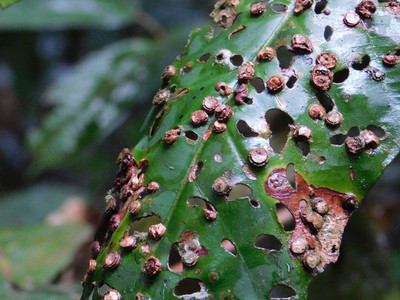




Comentários